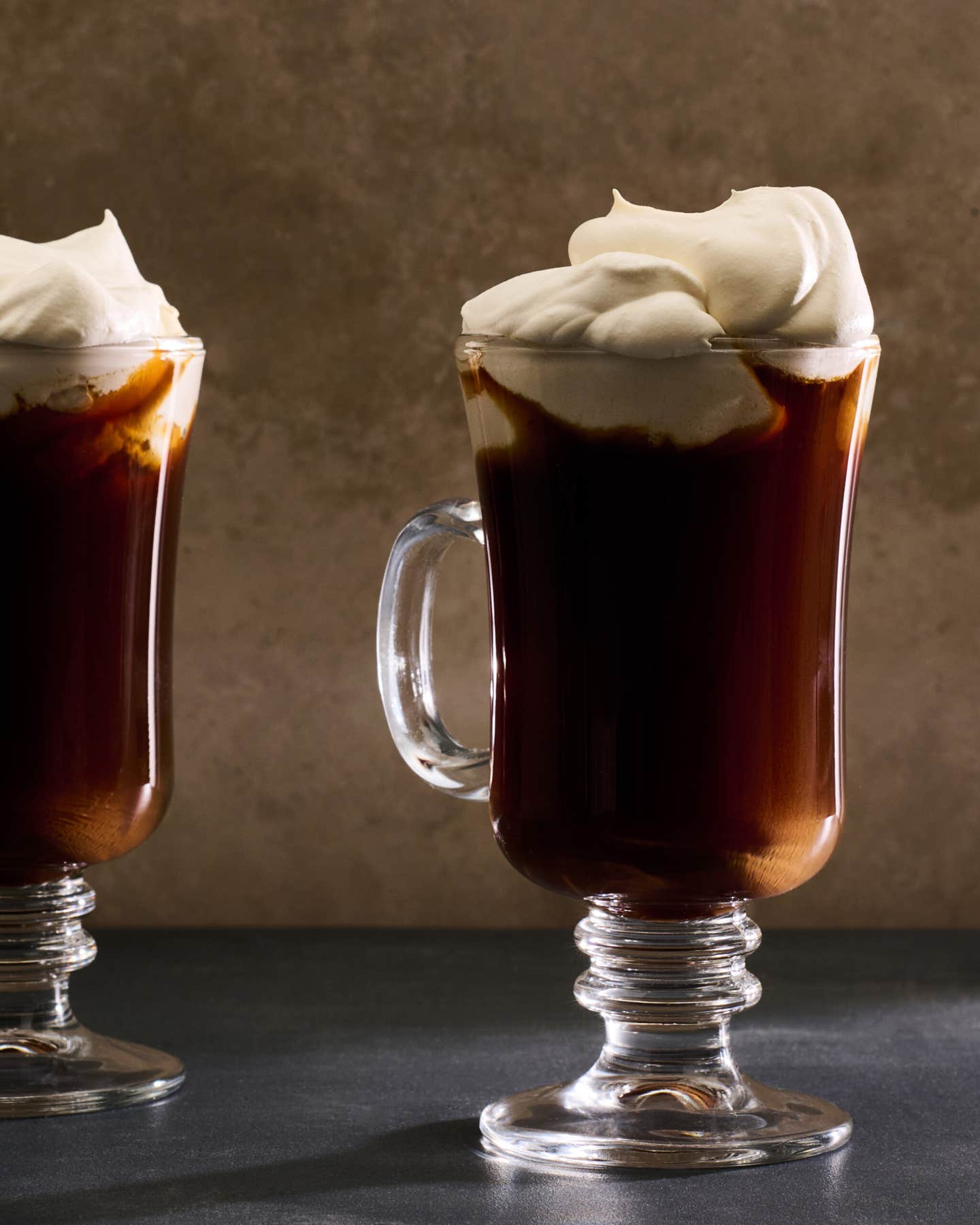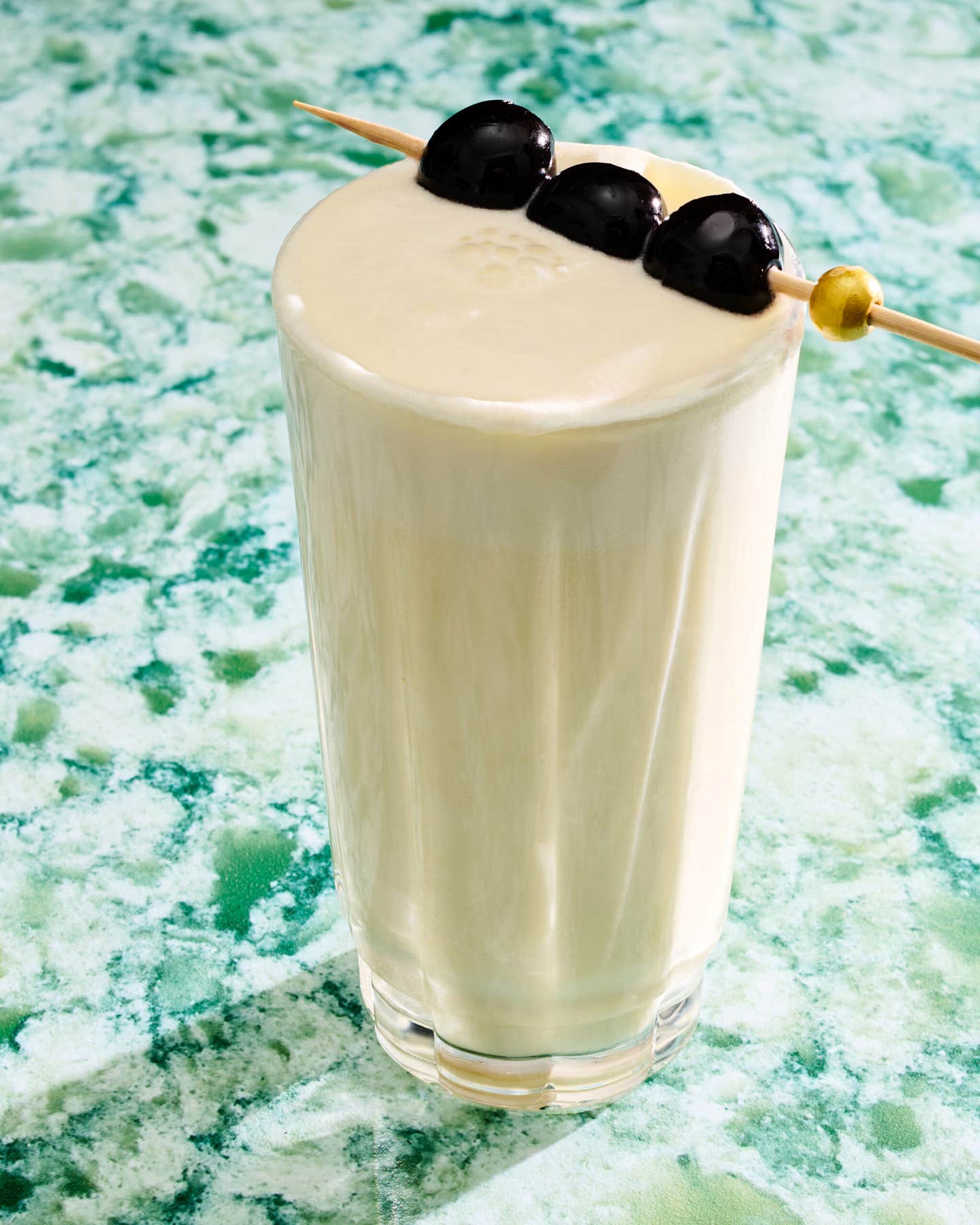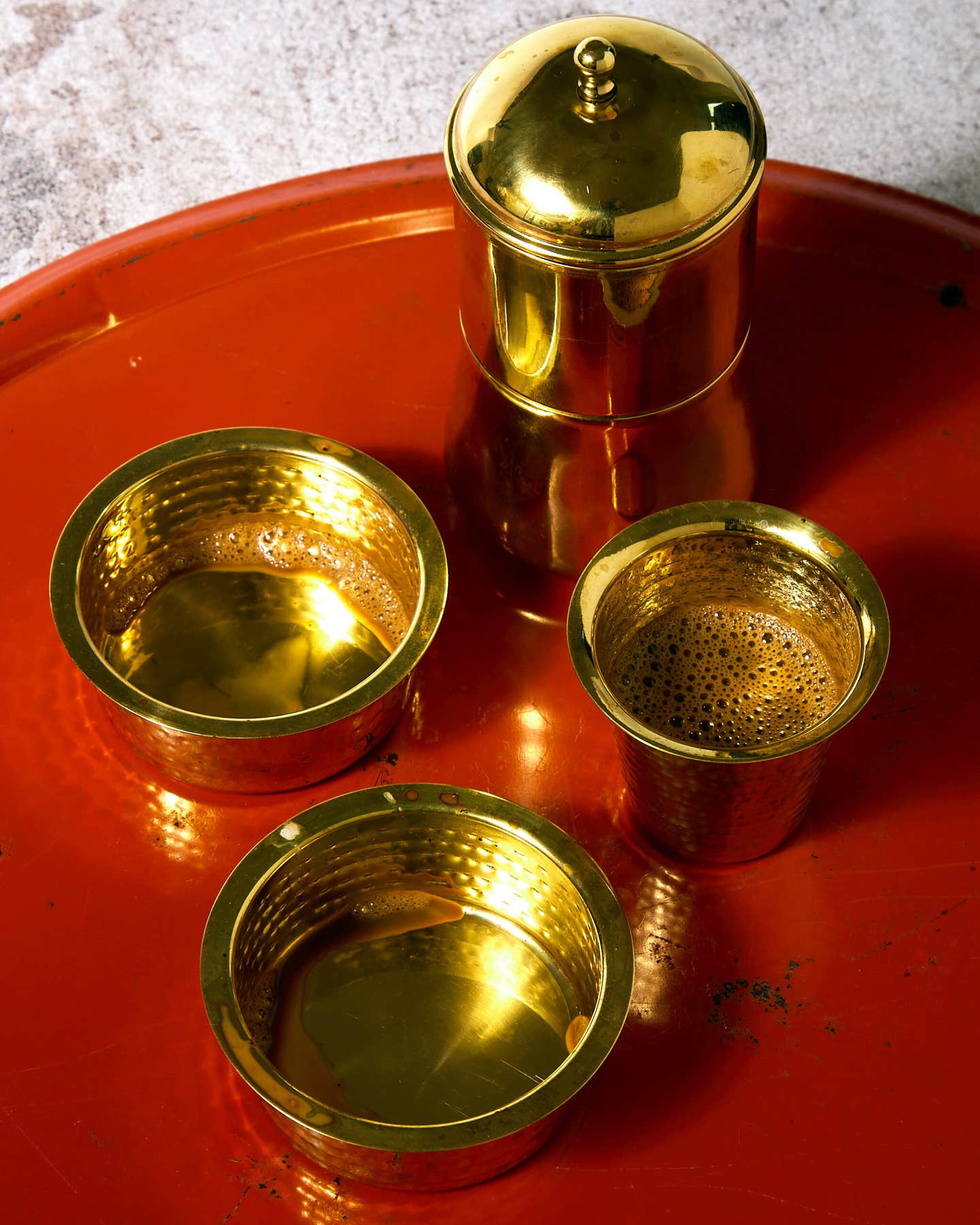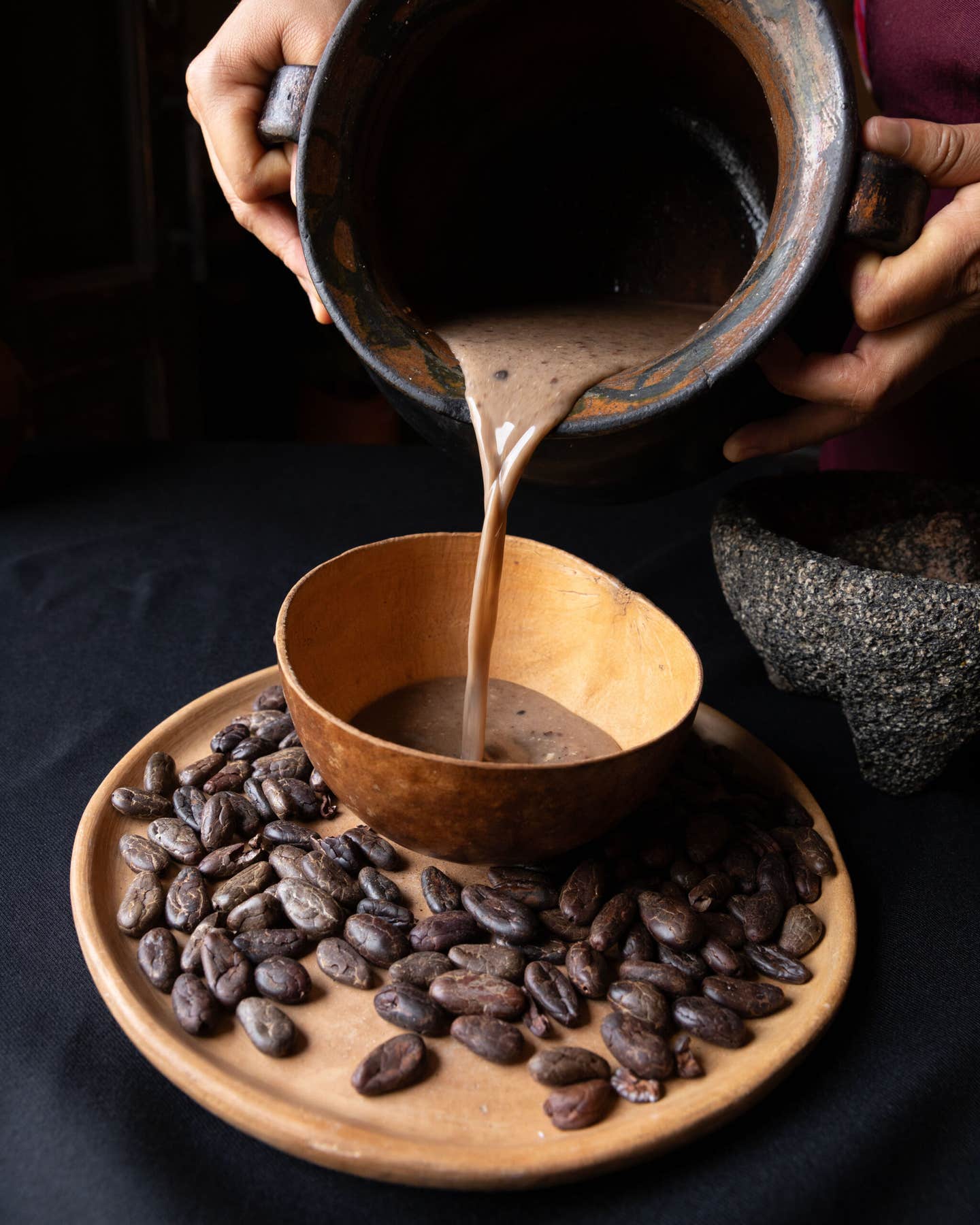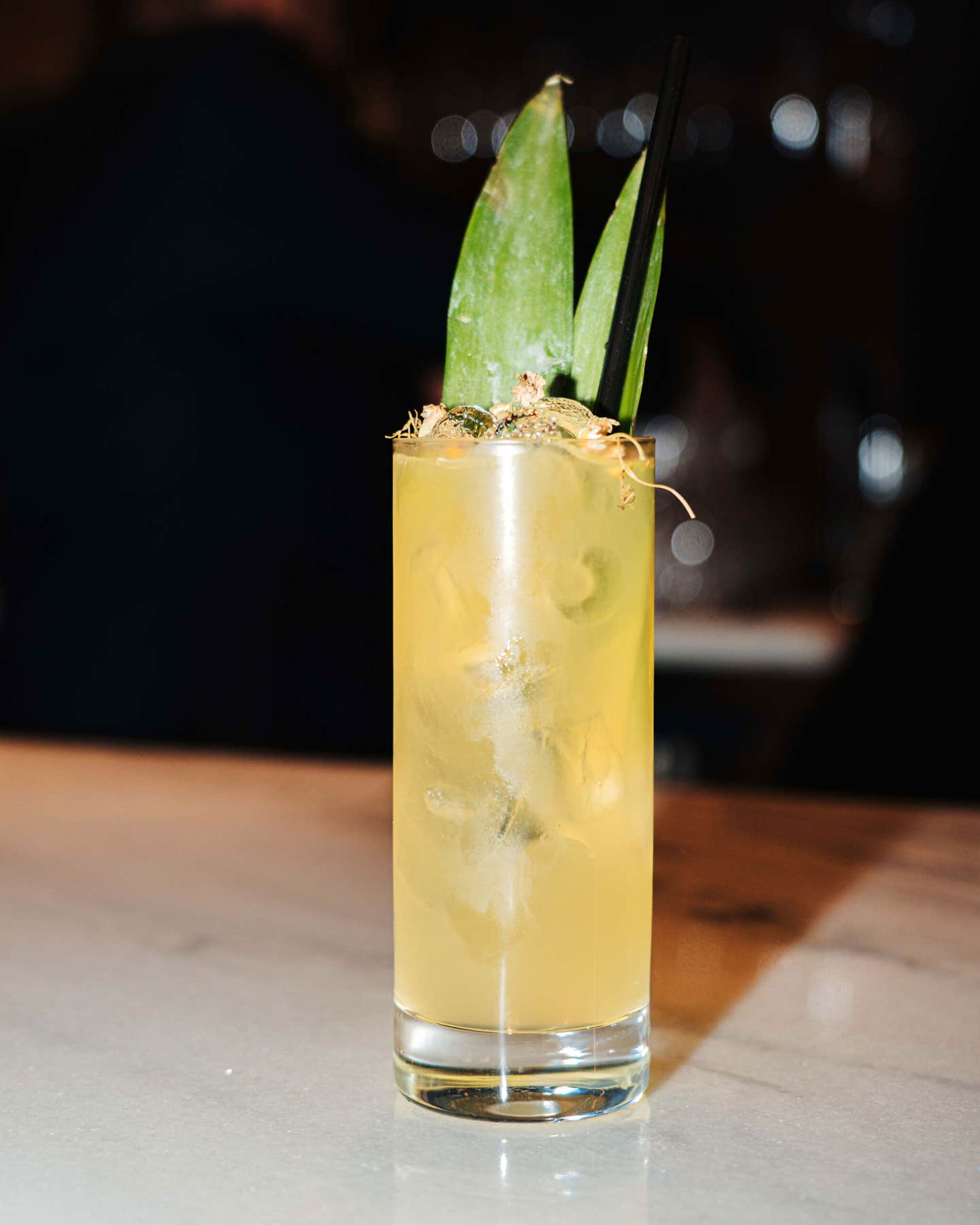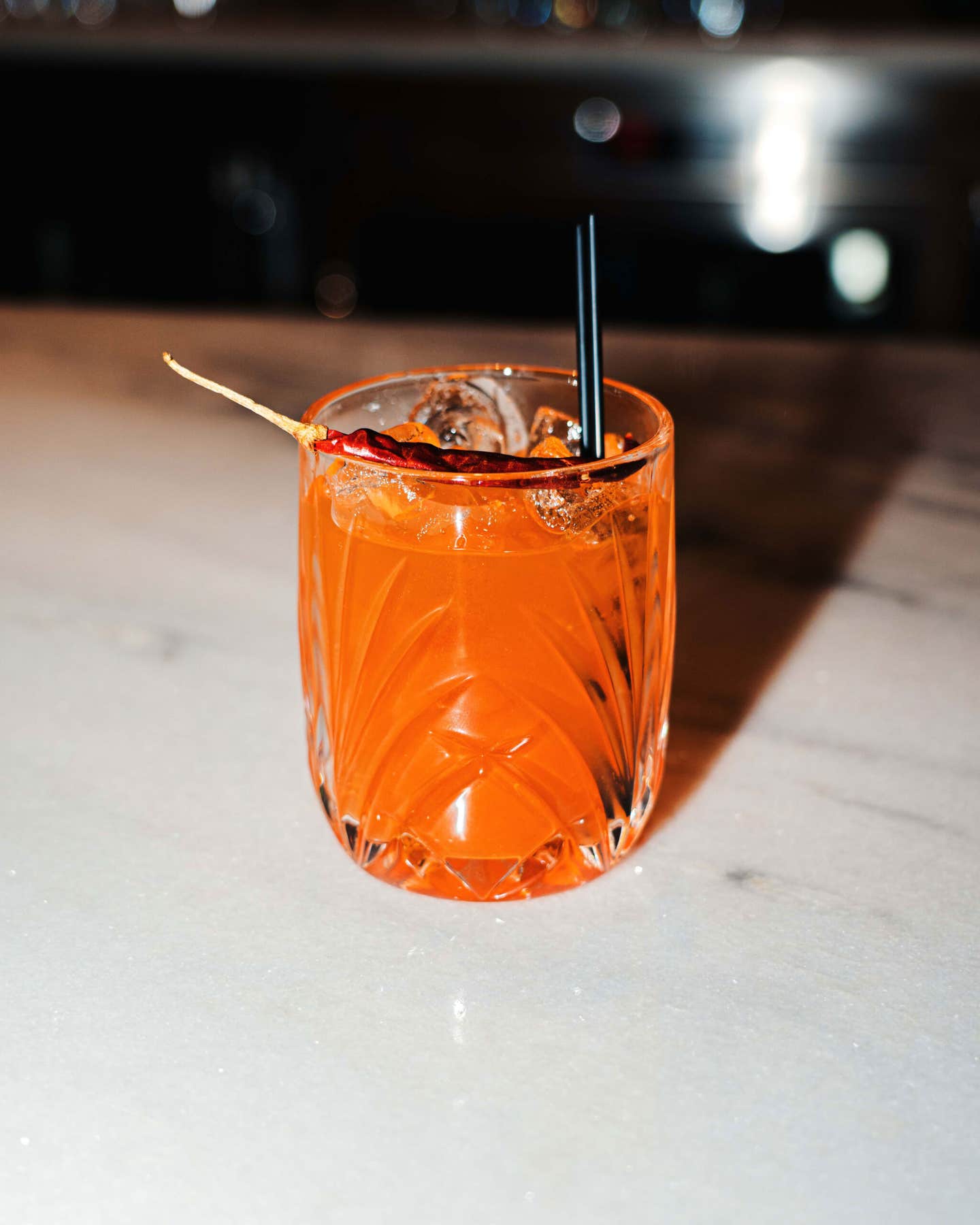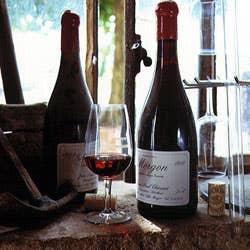
The New Beaujolais
In the town of Villie-Morgon, in the hills of northern Beaujolais, excitement is in short supply. This is Clochemerle country, where passing hailstorms and the date of this year's harvest are the subject of tireless debate and prediction. A socialite would die of tedium here in a matter of hours.
Gossip flourishes in such an isolated spot. Villie-Morgon may be only an hour's drive from Lyon, but it belongs to another world—a world of suspicion, conservatism, tradition, and, just occasionally, outright enmity.
Marcel Lapierre collided with all four in his time. He and a group of winemaking friends, known loosely as the Gang of Five, started raising eyebrows and hackles years ago in Villie-Morgon. It started with the surreal images Lapierre had painted on the ceiling of his wine cellar: a plump, cheesy moon and a sprawling, octopus-like sun. You can imagine what they made of those in the local bars.
More upsetting to the majority of the village's winemakers, though, was the article in a prominent French national newspaper. Jacques Neauport, known popularly as Bidasse (a childhood nickname from an old army song), a consultant winemaker to the group, told a reporter from Le Figaro that while the industrious five were busy in their cellars, analyzing samples under microscopes and checking the development of their wines, the rest of Villie-Morgon was sitting on its collective derriere watching game shows on television. (Beaujolais produced from grapes—gamay is the local variety for reds—grown in and around Villie-Morgon bears the Morgon appellation. Morgon is one of ten beaujolais crus, collectively considered the region's best wines. The others are Regnie, Brouilly, Cote-de-Brouilly, Moulin-a-Vent, Fleurie, Julienas, St-Amour, Chenas, and Chiroubles.)
Pierre Savoye, himself a well-known winemaker, says that Bidasse's comments were "ill-judged." To him, the Gang of Five have made the occasional interesting wine, but are "too marginal" to be taken seriously. Savoye is not alone. There's a lot of behind-the-hand sniggering about Lapierre and his friends in Villie-Morgon.
But what are people sniggering about? In short: the way these men make wine. Using traditional techniques enhanced by a knowledge of contemporary enology, they have produced what many wine-lovers consider to be some of the best wines in Beaujolais today.
The inspiration for their methods came from a remarkable man named Jules Chauvet—a self-taught intellectual, wineglass designer, and winemaker, who corresponded with Nobel Prize winners and published numerous books and pamphlets on the arcana of wine. When Chauvet died in 1989, at 82, the group lost its spiritual father.
It was Bidasse, the unofficial sixth member of the group, who discovered Chauvet first in 1978. He describes the moment as if it were a mystical experience. "I met this wizened old man who held his pants up with a length of string, and we started to talk about wine. The previous vintage, in 1977, had been terrible in Beaujolais, with lots of rain and vineyard rot. When Chauvet told me that he'd made his wine that year, as he did almost every vintage, entirely without sulfur dioxide [which winemakers commonly use to protect their wines from spoilage], I was dumbstruck."
Beaujolais may be an old-fashioned region, but that hasn't stopped local winemakers from abandoning traditional practices in favor of modern technology. Chemical fertilizers and sprays have been introduced in the field, grapes are picked earlier (for fear of bad weather) and chaptalized with sugar to give them higher alcohol, sulfur dioxide is used as an antioxidant, indigenous yeasts are replaced with cultured ones, and sterile filtration is employed to cut down on potential spoilage.
In this context, Chauvet's formula seems positively heretical: Start with old vines, pick grapes very late, select grape bunches carefully to eliminate rotten berries, ferment at cool temperatures with no sulfur dioxide and with natural yeasts, give the wines barrel age, and then bottle them without fining or filtration. Most of these practices are traditional and had been common in the region in earlier years. One, though, is very contemporary indeed: the measured control of fermentation temperature. In the old days, hosing down the vats or tipping ice into them was the only way to ensure a cooler fermentation. Christopher Piper, a winemaker in nearby Cote de Brouilly, remembers the very hot 1976 vintage as the year when he "bought more ice than the local fishmonger". Chauvet introduced a pneumatic cooling system, which made it possible to control temperatures scientifically for the first time.
Inspired by Chauvet, Bidasse came to the conclusion that making wine the natural way would interpret more faithfully the personality of the Morgon appellation. To learn more, he went to work at Chauvet's domaine in the Beaujolais-Villages appellation for two vintages. When Bidasse met Marcel Lapierre, the de facto leader of the Gang of Five, he promptly introduced him to Chauvet. In the time it takes to say "minimal filtration," Chauvet had another convert.
Lapierre changed his approach to winemaking virtually overnight. The 1982 vintage provided a rigorous examination of Chauvet's philosophies. It was a warm year, yielding wines naturally low in acidity. All over the region, winemakers produced volatile, vinegary wines. But Lapierre, guided by Chauvet and Bidasse, came through with his production intact.
Of course, his wines have varied in quality from year to year. Natural winemaking can be something of a roller coaster—but Lapierre has learned to enjoy the giddy thrills it entails. "It's a great release," he told me in Villie-Morgon over a plate of homemade sausages and a glass of his own red. "Every vigneron wants to work like this in his heart of hearts. But you have to be brave, and it can be expensive. Modern enologists are against the whole thing because it's risky, but for me it's the most natural way of doing things. You just have to spend a lot of time understanding the chemistry of what goes on."
Lapierre is a great raconteur who enjoys food as much as wine. More than anything, he says, it was the pleasures of the table that brought the five friends together. Lapierre, Guy Breton, Jean-Paul Thevenet, Jean Foillard, and Joseph Chamonard grew up together in Villie-Morgon and dined together endlessly for years, exchanging good bottles and winemaking tips. It was to be expected that, as the others tasted Lapierre's new wines, they, too, would come under the influence of Chauvet. After Chamonard died in 1990, his daughter Genevieve continued making the wine in the same way.
In the Beaujolais region, all too many wines taste as if they've emerged from one giant fermentation vat. Producers use cultured yeasts (one, called 71B, makes everything taste of bananas and chewing gum), chaptalize their wines, and make them in the same, risk-free way. At times, it's hard to tell the difference between vintages, never mind appellations. This is anathema to the Gang of Five. As Guy Breton puts it, "I like my wines to reflect the year in which they were made, not a fermentation yeast."
Unfiltered wines fermented with natural yeasts are not most people's idea of beaujolais, it must be said. We are light-years away here from the confected, raspberry sweetness of beaujolais nouveau, and even from the more serious fruity charm of most of the grands crus. Much beaujolais, and virtually all beaujolais nouveau, is produced by the technique of carbonic semi-maceration—in which whole bunches of grapes begin fermentation internally, in open vats, before being crushed. This produces intensely fruity wines with lots of color and little tannin. Fermentations are short, because when the juice is left in contact with pips and stalks for longer than a week or so, bitter flavors develop. The longer, traditional fermentations used by Lapierre and friends are always something of a risk. (The wine drinker takes a risk when he buys one of these morgons as well. Bad storage or transportation can upset the wine's equilibrium and set off what the Australian wine writer James Halliday has called a "bacterial time bomb." It's also advisable to have a decanter handy when you open one of these bottles, as additional aeration will help dissipate any off-odors that may have developed.)
The wines produced by Lapierre and company tend to be more tannic and concentrated than most other beaujolais, often sacrificing primary aromas for structure and complexity. They also have aging potential. Of the ten beaujolais crus, only five—Moulin-a-Vent, Morgon, Chenas, Julienas, and Cote-de-Brouilly—have a reputation for making wines worth cellaring. Of these, the wines of Morgon frequently age best. As they develop, the best wines are said to morgonner or even pinoter, taking on some of the gamy, barnyardy characteristics of red burgundy.
Chauvet's methods do not produce identical wines. Each of the five winemakers developed his own style. Foillard's wines are fresh and focused, with enormous concentration; Thevenet's are elegant and beautifully balanced; Breton's are rich and chocolaty; Chamonard's were supple and forward (and continue that way); Lapierre's are dense, tannic, and oaky.
The friends' personalities are as different as their wines. Breton, known as Le P'tit Max, is a motorcycling rock-and-roller. Thevenet is shy and self-deprecating. Foillard is serious and intensely passionate about his wines. Lapierre is just Lapierre, a big, hulking, witty chunk of humanity with enough enthusiasm and joie de vivre for half-a-dozen men. Chamonard was a garrulous joker.
Are these men a threat to beaujolais, as they have sometimes been called? No, of course not. Chauvet's disciples are outnumbered, both in Villie-Morgon and the region as a whole, and their vineyards occupy a small total of the total acreage in Morgon—hardly the stuff of which revolutions are made. And the Gang of Five doesn't consider itself revolutionary. "We're not trying to change things in Beaujolais," says Lapierre. "We just want to have fun. If anyone else wants to join the group, we'd love to have him along. But if not, we're happy eating and drinking together and enjoying each other's wines."
Keep Reading
Continue to Next Story



